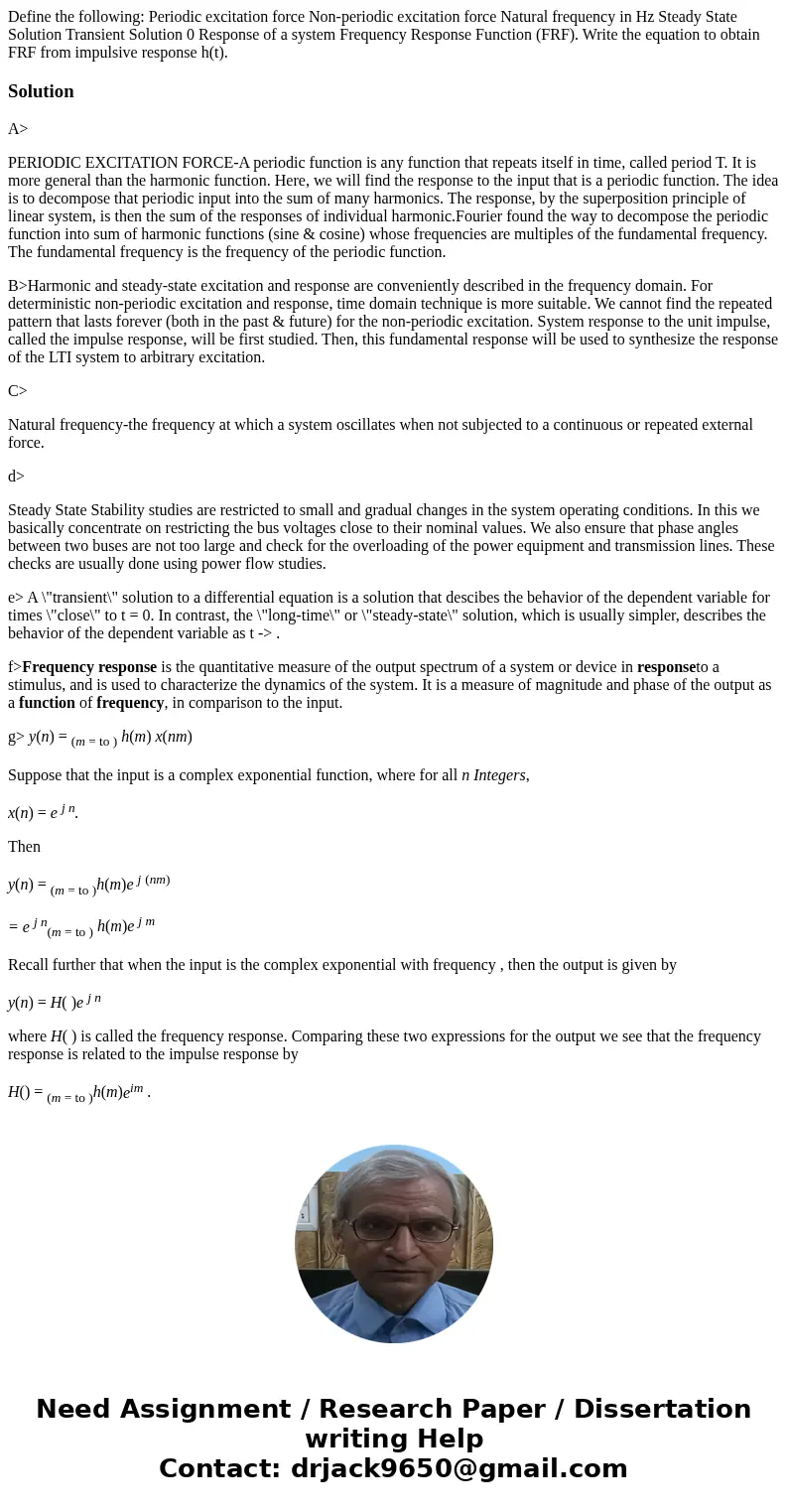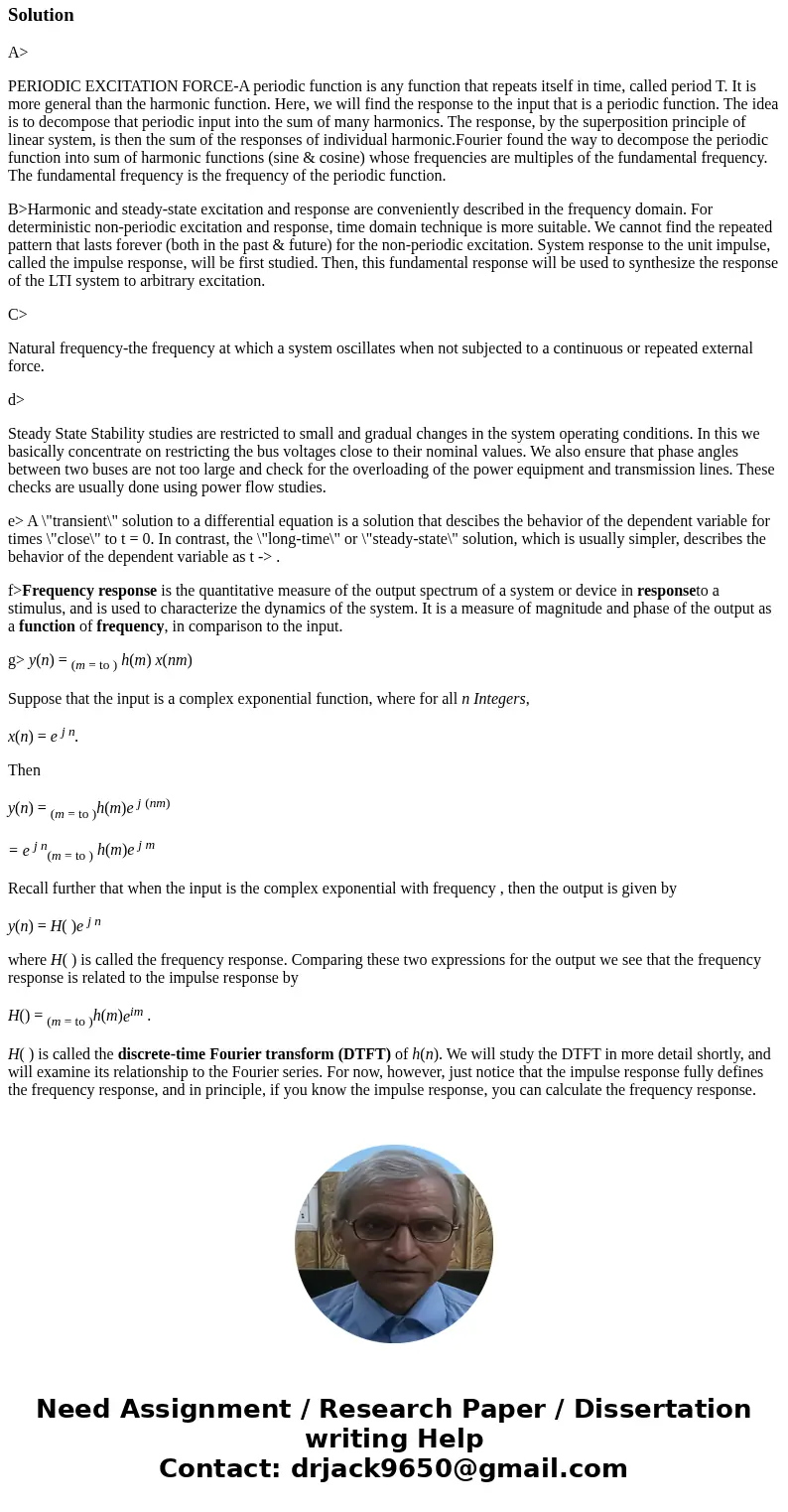Define the following Periodic excitation force Nonperiodic e
Solution
A>
PERIODIC EXCITATION FORCE-A periodic function is any function that repeats itself in time, called period T. It is more general than the harmonic function. Here, we will find the response to the input that is a periodic function. The idea is to decompose that periodic input into the sum of many harmonics. The response, by the superposition principle of linear system, is then the sum of the responses of individual harmonic.Fourier found the way to decompose the periodic function into sum of harmonic functions (sine & cosine) whose frequencies are multiples of the fundamental frequency. The fundamental frequency is the frequency of the periodic function.
B>Harmonic and steady-state excitation and response are conveniently described in the frequency domain. For deterministic non-periodic excitation and response, time domain technique is more suitable. We cannot find the repeated pattern that lasts forever (both in the past & future) for the non-periodic excitation. System response to the unit impulse, called the impulse response, will be first studied. Then, this fundamental response will be used to synthesize the response of the LTI system to arbitrary excitation.
C>
Natural frequency-the frequency at which a system oscillates when not subjected to a continuous or repeated external force.
d>
Steady State Stability studies are restricted to small and gradual changes in the system operating conditions. In this we basically concentrate on restricting the bus voltages close to their nominal values. We also ensure that phase angles between two buses are not too large and check for the overloading of the power equipment and transmission lines. These checks are usually done using power flow studies.
e> A \"transient\" solution to a differential equation is a solution that descibes the behavior of the dependent variable for times \"close\" to t = 0. In contrast, the \"long-time\" or \"steady-state\" solution, which is usually simpler, describes the behavior of the dependent variable as t -> .
f>Frequency response is the quantitative measure of the output spectrum of a system or device in responseto a stimulus, and is used to characterize the dynamics of the system. It is a measure of magnitude and phase of the output as a function of frequency, in comparison to the input.
g> y(n) = (m = to ) h(m) x(nm)
Suppose that the input is a complex exponential function, where for all n Integers,
x(n) = e j n.
Then
y(n) = (m = to )h(m)e j (nm)
= e j n(m = to ) h(m)e j m
Recall further that when the input is the complex exponential with frequency , then the output is given by
y(n) = H( )e j n
where H( ) is called the frequency response. Comparing these two expressions for the output we see that the frequency response is related to the impulse response by
H() = (m = to )h(m)eim .
H( ) is called the discrete-time Fourier transform (DTFT) of h(n). We will study the DTFT in more detail shortly, and will examine its relationship to the Fourier series. For now, however, just notice that the impulse response fully defines the frequency response, and in principle, if you know the impulse response, you can calculate the frequency response.


 Homework Sourse
Homework Sourse